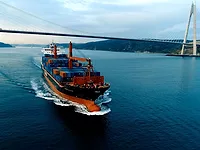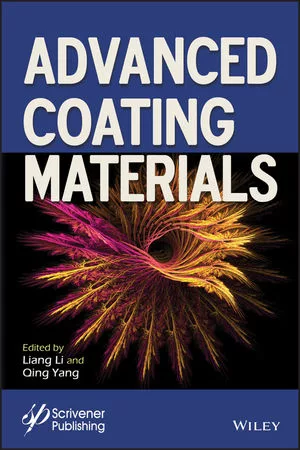Graphene Coating Begins Commercial-Scale Trial on Ocean-Going Cargo Vessel

WEST PERTH, Australia — Advanced battery anode materials and graphene additives provider Talga Resources Ltd. announced the start of a commercial-scale trial of a Talga graphene-enhanced coating applied to a 33,000t container ship.
Believed to be the world’s largest single application of graphene, the 700m2 coating of the cargo vessel’s hull is part of advanced testing of Talga’s functionalized graphene (Talphene®) additive as a performance booster for existing commercial marine coatings.
The commercial-scale application follows completion of in-house development and patent-pending technology that successfully translates graphene’s exceptional mechanical properties into paint and coatings. The result is expected to be a range of environmental and economic benefits, which for marine applications such as shipping and offshore infrastructure includes improved corrosion resistance, decreased metallic paint loss into oceanic ecosystems, and increased efficiency through lowering dry docking cycles.
The freshly coated ship is now at sea and over the coming 12-18 months the Talphene-coated area will be evaluated in the harsh conditions of global cargo shipping.
Talga Managing Director Mark Thompson said, “The maritime coating sector is a very large market and well suited to use of our Talphene graphene additives for improved environmental and economic outcomes. Additionally, by successfully taking this new product from the laboratory to commercial-scale application on a 33,000-tonne ship, being tested across global marine environments, we are showcasing our graphene’s real-world potential as a bulk industrial product.”
Talphene Coating Product Development
Coatings are one of Talga’s key target products due to the large volume of the market and graphene’s potential to provide substantial new levels of performance and environmental sustainability.
For maritime applications, Talga’s additive development has included multi-stage testing to optimize graphene loadings (i.e. quantities) and Talga’s unique patent-pending dispersion technology for epoxy-based commercial primer coating systems.
Testing by Talga included industry accepted ASTM prescribed Salt Fog Test (ASTM B117) where steel panels coated with epoxy primer containing Talphene additive showed improved corrosion protection performance compared to commercial systems currently used worldwide in large volumes.
Further evaluation included mechanical performance tests, carried out to ASTM standards by the research organization The Welding Institute (TWI), as the coated surfaces of ships and maritime infrastructure were exposed to considerable abrasion and mechanical damage during service.
The results showed a significant improvement in primer performance, including greater adhesion to the substrate (by ~7%), greater interlayer adhesion to the subsequent (antifouling) coating systems (by ~14%) and consistent improvement in abrasion resistance. These improvements in performance were a notable outcome for this highly optimized industry, indicating that graphene’s exceptional mechanical properties translated into the coating system and warranted commercial-scale trials.
Commercial Ship Application and Trial Details
Based on the successful lab results, plans were drawn up for a major commercial-scale application and sea trial. A two-part epoxy based commercial coating system was purchased (Akzo Nobel Intershield 300) and mixed with the Talphene additive before dispatch to the ship management company for application during vessel dry docking (carried out every ~5 years for ships of this size).
The test areas along the ship’s starboard side, both below the water line and above in contact-wear sites, were blast cleaned to remove prior paint systems before the Talphene-enhanced primer coating was applied (next to a test reference coating without Talphene) in two coats, using manual spray systems.
A major challenge of the product development was to translate the positive lab-scale tests into practical, large-volume use by on-site commercial applicators. The successful application of the Talphene-enhanced coating without any adverse effect in terms of stability in resin, application, curing and surface features is a positive step forward in the commercialization process.
The test areas have been over-coated with the standard topcoats used on the rest of the vessel and marked to ensure identification during service. Periodic inspection will be carried out over the next 12-18 months to determine real world performance.
Next Steps
Talga intends to continue development of this Talphene additive for marine coatings under its range of paint and coating additives now trademarked as Talcoat™. The next steps include a trial of the additive as an after-market product, to be mixed into the coatings on-site by the commercial applicators, as opposed to being dispersed by Talga prior to despatch.
Talga has also identified a range of potential commercial partners and commenced discussions, under NDA, regarding the incorporation of Talcoat products into their existing and new coating product lines. The company notes that these negotiations are preliminary, and further updates will be released as and when any definitive commercial agreements are reached.
Looking for a reprint of this article?
From high-res PDFs to custom plaques, order your copy today!





